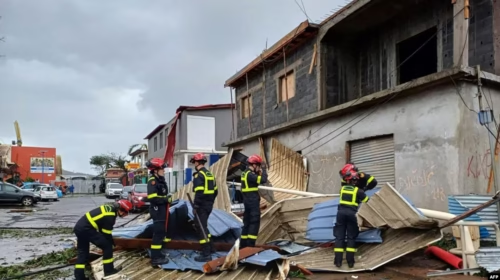The ongoing situation at Sally Mugabe Hospital exposes not just a single institution’s collapse but a national health crisis demanding urgent attention. What’s unfolding here is indicative of broader systemic issues.
Patients and staff alike are now enduring unimaginable conditions. Malfunctioning elevators have forced nurses to carry deceased patients down flights of stairs, an act both physically and emotionally draining.
For patients already suffering, the broken lifts mean more than just inconvenience. They face grueling climbs, often in immense pain, adding to their distress.
Power outages further complicate matters, especially in the hospital’s mortuary, where disruption is unforgivable. Such consistent outages are a clear sign of the crumbling infrastructure nationwide.
Staff morale is plummeting. In an environment where medical professionals should feel empowered, many nurses are resigning. The trauma of their daily tasks is becoming unbearable.
Carrying a deceased patient down the stairs shouldn’t even be an option in a healthcare system that claims to serve its people. Yet here, it is the reality. This is a reflection of how dire the situation has become.
Moreover, there’s an ongoing water crisis. Patients, already battling illness, are now forced to bring their own water or buy it from local vendors. This adds an unnecessary layer of hardship.
With water priced at $1.70 for just five liters, it’s not hard to imagine the financial strain this places on already struggling families. This is healthcare at its most broken.
The emergency response at the hospital has faced heavy criticism. Patients report lengthy waits for care due to the shortage of essentials, including beds and wheelchairs. In Ward B3, patients wait endlessly.
Instead of a prompt response, they must wait for others to vacate beds before receiving the care they need. This is not just a failure; it’s an indictment of the state’s priorities.
The hospital itself is a symbol of neglect. According to Dr. Masanga Mutede, acting director of the Ministry of Health, the institution’s deterioration is evident in cracked floors and lack of basic maintenance.
Mutede’s statement is damning: the quality of service is reflected in the crumbling walls and overflowing maternity wards. Mothers, he noted, are often forced to lay on the floor due to a lack of beds.
In this context, the hospital ceases to be a place of healing; it becomes a place where people endure yet more suffering. Zimbabwe’s healthcare infrastructure, once a beacon of hope, now lies in disrepair.
Despite these glaring issues, the Ministry of Health promises a centralized procurement system to address the medicine shortages. This solution, however, is long overdue, and the crisis cannot wait for bureaucratic delays.
It’s crucial to understand that this crisis at Sally Mugabe Hospital isn’t an isolated problem. It’s reflective of the broader decay in Zimbabwe’s public health sector.
Years of underfunding, mismanagement, and neglect have left hospitals ill-equipped to serve the public, even in times of relative calm. When emergencies arise, the cracks in the system widen.
Healthcare professionals are being asked to work under inhumane conditions. Their resilience is commendable, but it is unfair to expect them to continue without adequate support.
This isn’t just about elevators and power outages. It’s about a healthcare system that has been allowed to collapse, leaving the most vulnerable to suffer.
The future of healthcare in Zimbabwe requires more than just short-term fixes. It demands long-term, sustainable investment. Patients deserve more than crumbling buildings and inconsistent care.
At the core of this issue lies a question of priorities. Will the government continue to ignore these alarming signs, or will it step up and address the needs of its people?
The situation at Sally Mugabe Hospital may be dire, but it isn’t unique. Without immediate reform, this may just be the beginning of a much larger national health crisis.













